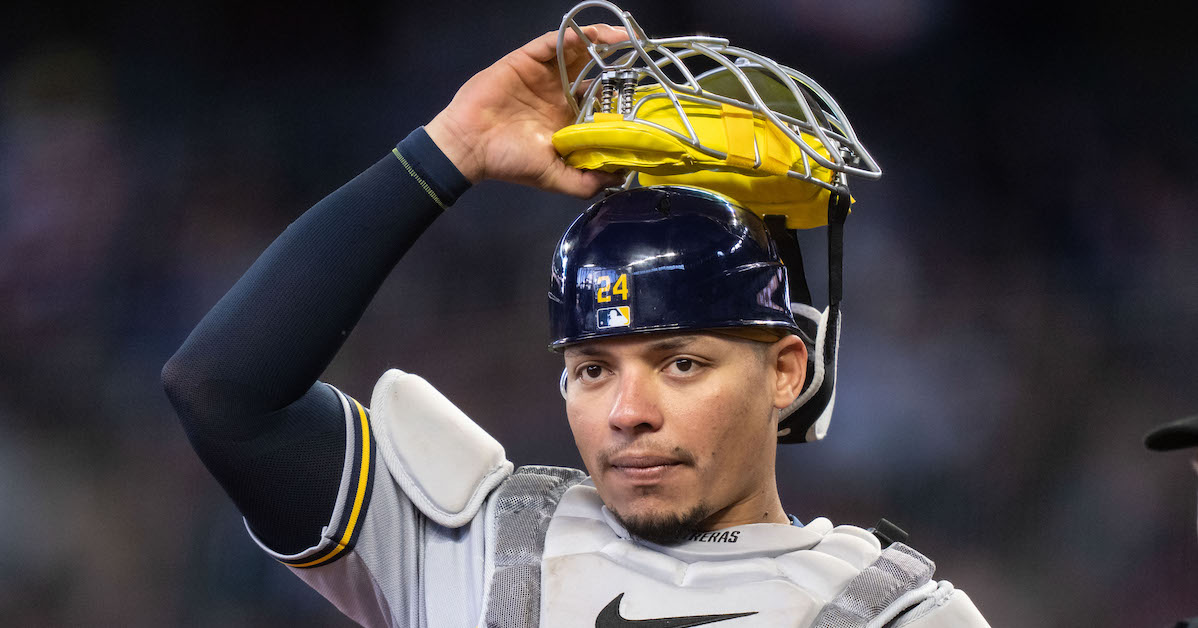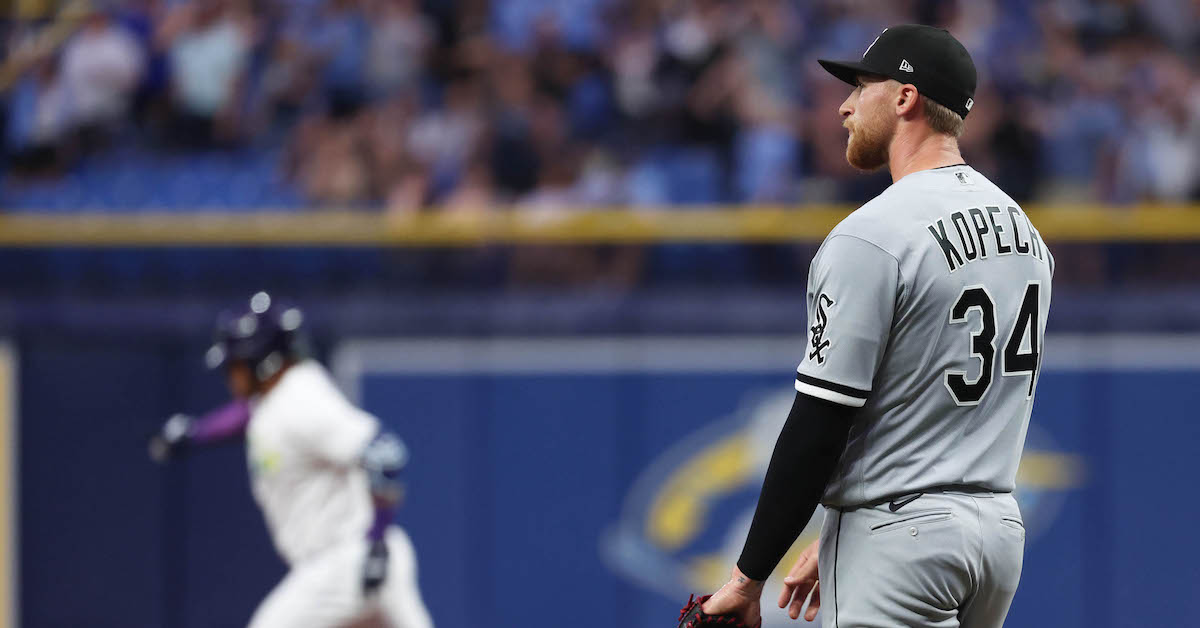William Contreras’ Defense Has Done a Complete 180

There is some fantastic coaching happening in Milwaukee. Over the last handful of years, there have been multiple instances of catchers completely turning their defense around with the Brewers, with Omar Narváez the most notable example. The team’s latest success story is William Contreras. In his first 146 games with Atlanta, Contreras was a solid player with an exceptional bat. In 376 plate appearances in 2022, he had a 138 wRC+. That is a great mark for any hitter, let alone a catcher. However, his defense was lackluster across the board. The skills were there — that didn’t seem to be a major concern — but Contreras’ performance was below average when it came to framing, blocking, and throwing. It seemed like his defense might be a slow burn, but Milwaukee had another plan in mind.
To get an idea of how incredible Contreras has been so far, we will start with the numbers. You might be shocked when you see them because this isn’t a story of a catcher going from below average to average. This is the story of a catcher going from below average to top tier:
| Season | Pitches Caught | Strike Rate | Framing Runs AA | Blocks AA | Caught Stealing AA |
|---|---|---|---|---|---|
| 2021 | 1317 | 45.3 | -3 | -5 | -1 |
| 2022 | 1629 | 45.1 | -3 | 3 | -4 |
| 2023 | 815 | 49.2 | 2 | 7 | 1 |
Are you confused? I’m confused. When I first saw these numbers, my jaw dropped. Catcher is the most physically demanding and difficult position on the field. To suddenly become one of the best at the position in a matter of months is inconceivable to me. Typically, a player will see improvements in one area one year, another in the next, and so on and so forth. Contreras didn’t have a typical ascent though. Instead, he did all of this practically overnight. His framing has moved from the 20th percentile last year to the 74th percentile this year. In 2022, he wasn’t even in the top 50 of blocking runs saved, but he now leads all catchers. Yes, that’s a better rate than J.T. Realmuto or Sean Murphy have managed. Lastly, his throwing has been good this year as well. Despite no real improvement in terms of his pop time, his CS% jumped from 7% to 33%. That is most likely due to significantly improved accuracy and footwork. So what gives? How in the world is he pulling this off?
I’ll start with blocking. A rapid improvement here makes more sense to me than framing. I say that because blocking is all about preparation, both pre-game and pre-pitch. Pre-game, you have to do the necessary work to understand your staff’s pitch shapes and tendencies. If this becomes back of the hand knowledge to you, then blocking in game is that much easier. Pre-pitch, you use that knowledge to determine your setup and decision making. After watching every pitch that Statcast labeled as a block for Contreras both last year and this year, it’s become clear to me that the improvement is rooted in Contreras no longer attempting to block right-handed breaking balls and offspeed pitches with his chest. Here is some video from 2022 to start:
All three of these pitches are standard blocking attempts. There isn’t a 30 foot spiked pitch or one with wicked side-to-side spin. Technically, they are all executed blocks since the runner doesn’t advance and they didn’t scoot far enough away to be passed balls. However, each of these locations should be areas that a catcher stuffs right in front of them. Now, let’s see what Contreras does this year in the face of right-handed breaking ball and offspeed pitches:
This is unorthodox! When I think of the great pickers, names like Yadier Molina, Francisco Cervelli, and Joe Mauer come to mind. But the weird thing is, they didn’t all exclusively pick! Usually there is a time and place where you just have to get your body in front of the ball, but for Contreras, his hand is the best possible extension of his body he could have. On spiked curveballs or side-sweeping sliders far in front of the plate, he is picking the ball with ease.
There were signs this was a special skill for Contreras last year — he picked countless nasty sliders from Spencer Strider all season. But it’s quite unorthodox to tell a catcher to completely sell out for this approach. However, if you’re confident enough in the scouting that says he has 80-grade hands and readability, then heck, just go for it! The early returns are quite promising too. You may think this is luck, but these four examples are representative of a skill that Contreras has shown to be repeatable all season no matter the pitcher or pitch shape.
Now, let’s move on to the other key part of catching directly related to smooth, strong hands: framing. If you can recall from the table above, Contreras’ strike rate has increased by 4.1 percentage points since last year, and his framing runs have increased by 5. The best opportunity for a catcher to make a big jump in framing is the bottom of the zone, from the middle of their body and away from their glove hand – and that has indeed been the point of focus and improvement for the Brewers backstop. Statcast defines these two zones as Zone 18 (middle-low shadow zone) and Zone 19 (arm side-low shadow zone). In Zone 18, Contreras’ strike rate has jumped from 43.6% to 62.7% (third in baseball). In Zone 19, it’s jumped from 20.3% to 29.7% (ninth in baseball). That’s another huge increase that warrants some video work. Here are six videos of pitches in Zone 18 – the first three are from 2022 and the second three are from 2023:
2022
2023
This trend was much easier to pick up on than the picking! Right away you can see that Contreras has changed his pre-pitch hand position. In 2022, his hands were stabby at the bottom of the zone. One crucial part of framing fastballs at the bottom of the zone is having a loose wrist as the pitch is being released. That slight quarter turn he did before the pitch wasn’t enough for him to keep consistent looseness between his wrist and elbow. Even when he did attempt a quarter turn (as with Kyle Wright’s sinker), it was off tempo and he still ended up bringing up his glove to the middle of his body before the pitch arrived.
In 2023, he has bought into a soft quarter turn that allows him to stay under the ball through reception. If you can stay under every single pitch, you can better manipulate the presentation of the ball. Pushing up through a fastball is much smoother than stabbing it and picking your glove back up. The best way for you to do that consistently is by making sure your glove always starts under the height of the shadow zone. It’s a simple concept that doesn’t require the catcher to take on a complete overhaul. Cue the right motions and targets, and the catcher will begin to understand what that reception should feel like. Contreras clearly now has that understanding and ability to execute every pitch.
As far as throwing is concerned, it’s not surprising to see early success for Contreras just from a mental point of view. If you’re confident in your receiving and blocking, then your mind is in a better place to execute solid mechanics and make an accurate throw. But I do have to point out how the improvement in framing can directly impact this as well. With a smooth motion from the ground up, your hands are in a better position to perform consistent exchanges. Stabbing at the ball brings your momentum back towards the ground, whereas a fluid motion starting from the ground lets you maintain a fluid motion towards your ear. It is all connected!
This early success is amazing for both Contreras and the Brewers. Last year, their two primary catchers were Victor Caratini and Narváez. Both were sub-90 wRC+ hitters despite their great catching. That led to 2.3 combined WAR on the year. Through 33 games (29 at catcher), Contreras has already accumulated 1.1 WAR. If he stays on that track, it will be a significant upgrade for the team. It’s an exciting development for both the club and a young catcher who looked like he might be an offense-first player behind the dish. Kudos once again, Milwaukee.









